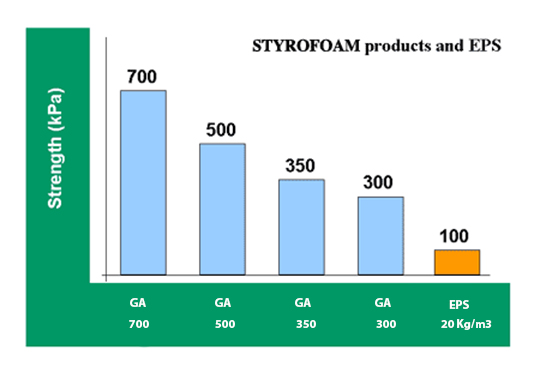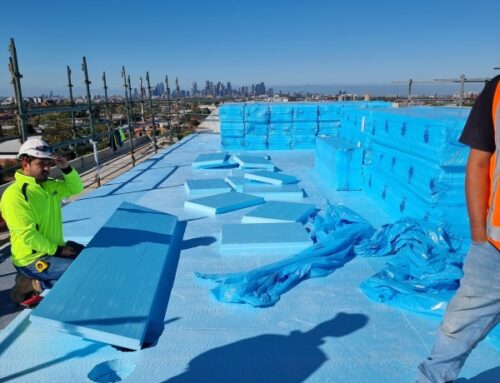Based on a Canadian study that looked at the long-term performance of EPS in ground contact, the manufacturers of EPS in North America and Canada started claiming that it was just as suitable for ground use as XPS. Later industry-sponsored research went further and, based on evidence of in-service failures with roof decks, claimed that XPS did not perform in practice the same as it did in laboratory tests and therefore EPS was in fact superior. The XPS industry has countered that with research of their own. It is interesting to note that the emphasis from the XPS industry has shifted from low moisture uptake, as happens with the laboratory immersion and moist air testing regimes, to the moisture vapour diffusion properties of XPS.
The examples of XPS failure appear to be mostly related to complicated roof deck situations and use in conjunction with less than perfect waterproof membranes. The weight of evidence is in favour of XPS being significantly more resistant to moisture uptake in ground contact when there is no deliberate provision for drainage around and under the insulation.
The traditional method of installing EPS perimeter insulation was in conjunction with drainage material backfill, polyethylene to protect the foam and a drain below the insulation. With XPS, only the polyethylene membrane is used.
Both EPS and XPS have evolved with time. Blowing agents have changed and in the case of EPS the blowing agents are in the process of changing again. XPS in North America and Canada is now made without ozone-depleting blowing agents but this is not the case elsewhere. Some of the XPS products being imported into New Zealand appear to be made from slicing down of bulk stock rather than extruding at thickness with skins. The skins on XPS sheets slow down the ageing and are a major contributor to moisture properties. BRANZ has tested an XPS product with a thermal conductivity of 0.036 W/mK. In contrast, the carbon-infused EPS can have a conductivity significantly lower than that value. Much of the EPS manufactured in New Zealand include recycled content and the texture can sometimes be more porous.
It is important to allow moisture to diffuse out of the foam, so is not a good idea to try to fully encapsulate it in a waterproof protection. It is better to allow moisture diffusion out into the soil. During winter any moisture in the wall footing will be driven outward into the perimeter insulation so is best to use a vapour-permeable protection for the outside of the insulation. If that is not possible then the foam should extend below ground, only leaving the above-ground component with the moisture-impermeable protection layer. In general, the footing should not have a very high moisture content so the main risk is in the retrofit situation if water is transported up between the insulation and the concrete by the capillary. A capillary break such as a butyl strip may be needed at the bottom edge of the insulation.





Leave A Comment
You must be logged in to post a comment.